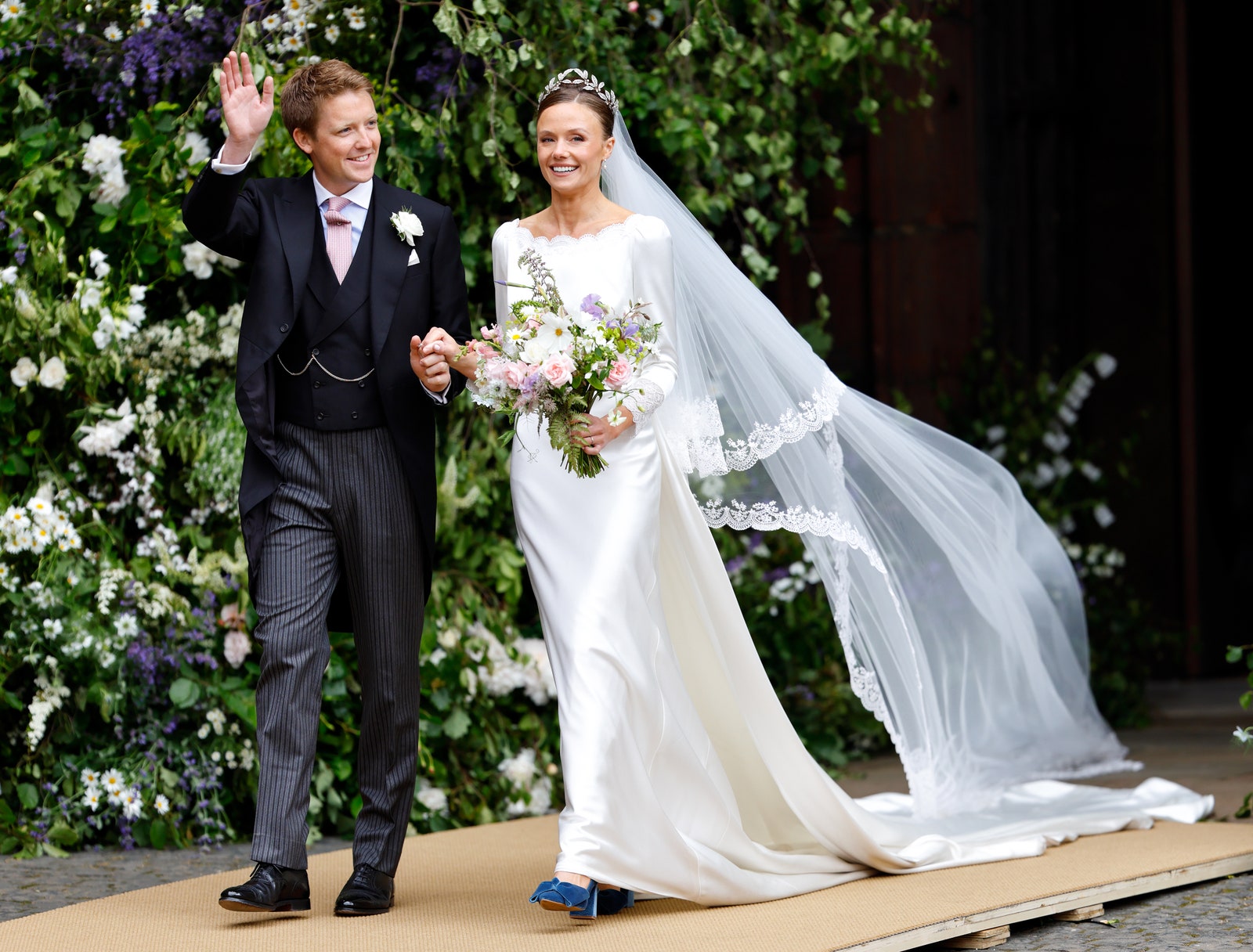
The new Duke and Duchess of Westminster, Olivia Henson and Hugh Grosvenor, recently wed in what’s been called “the society wedding of the decade.”
Royal weddings always seem to cast a spell over us—it’s like watching a fairytale come to life—but they’re somewhat rare events. In Great Britain, the wedding of Kate Middleton and Price William in 2011 was a major event and the mood board for many dream weddings, of course. A few years later, the wedding of Prince Harry to Meghan Markle was a little more modern but just as magical. But there likely won’t be another wedding in the immediate royal family for some time to come, which is why we’ve now turned our attention to the broader Windsor family beyond the core line of succession.
Which brings us to June 7, when the 7th Duke of Westminster, Hugh Grosvenor, married Brit Olivia Henson.
The wedding took place in Chester in the northwest of England and is already being celebrated as one of the biggest society weddings of the year, at least in the UK. A number of royals traveled to attend, including Prince William. But what interests us most is not the royal guest list, but the wedding look.
Olivia Henson opted for a custom-made wedding dress by London designer Emma Victoria Payne for her big day. In terms of style, the look is actually somewhat reminiscent of a mix between Kate Middleton and Meghan Markle; like the Princess of Wales, the 30-year-old also opted for a long veil with a subtle lace border. And similar to Meghan Markle, her dress, which was made from delicate white silk satin, had a very minimalist cut.
Getty Images
But it was the accessories that truly made the look special. The bride wore the “Faberge Myrtle Leaf Tiara,” which brides of the noble Grosvenor family—to which her groom belongs—have always worn on their wedding day since 1906. Olivia Henson’s veil pays homage to her own roots: The lace border is based on the style of her great-great-grandmother’s veil from around 1880.



